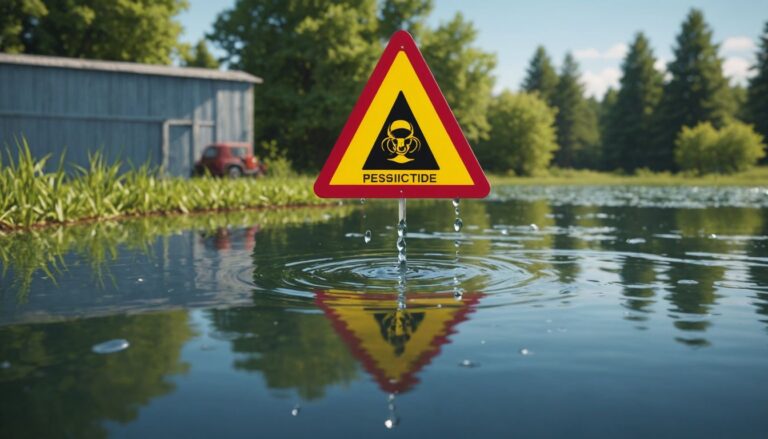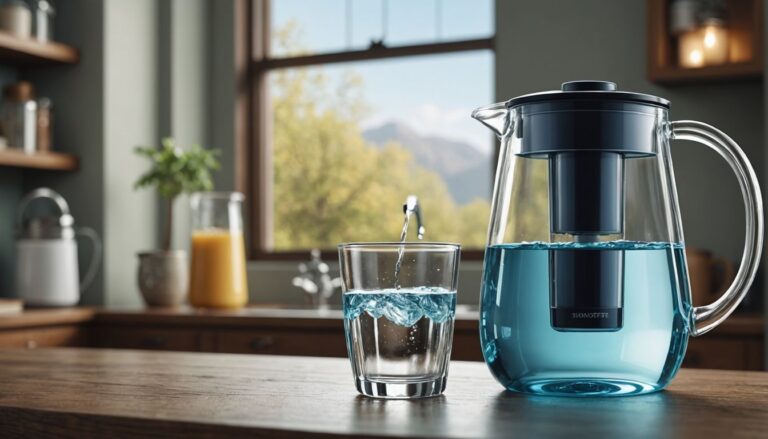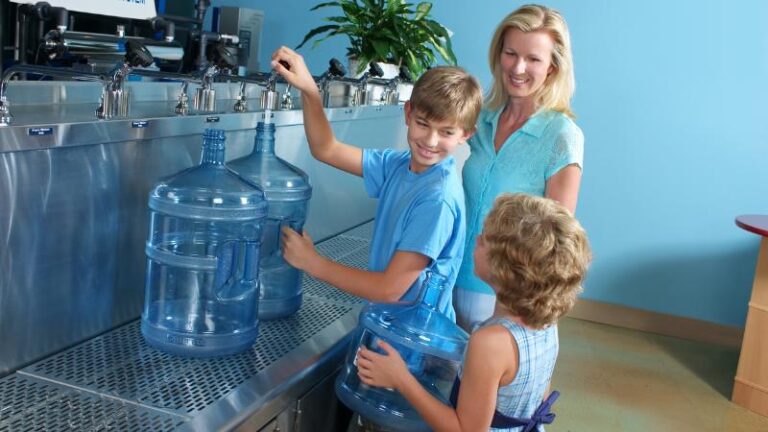How to Wash Fruits and Vegetables to Remove Pesticides
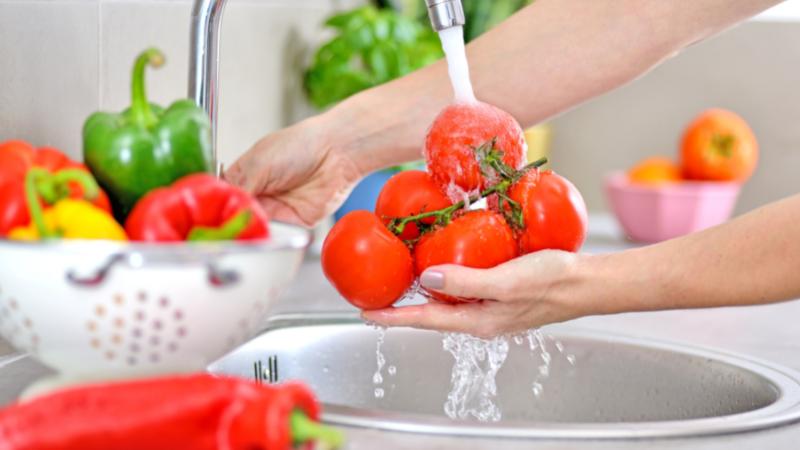
As a consumer, you want to make sure that the food you eat is safe and free from pesticide residue.
Unfortunately, many fruits and vegetables are sprayed with pesticides to protect them from pests, which can lead to residue on the produce.
Fortunately, there are a few methods that can be used to effectively remove these residues. Don’t worry, you are about to discover how to wash fruits and vegetables to remove pesticides.
By following these steps and understanding the different methods of washing produce, you can help ensure that food is safe for you and your family.
Rinsing, Rubbing, and Scrubbing
Rinsing, rubbing, and scrubbing are all effective ways to clean your fruits and vegetables and help remove pesticide residue.
Rinsing
Rinsing is one of the simplest and most effective methods for removing dirt and pesticides from your fruits and greens.
To rinse your produce, simply run cold water over them for about 30-60 seconds. This will help to remove any dirt, wax coating, and surface pesticides.
It’s important to use cold water as hot water can actually cause the pesticides to be absorbed into the produce.
After rinsing, you can pat them dry with a clean cloth or paper towel. This method is especially effective for removing dirt from produce with firmer skin such as eggplant, potatoes, or cucumbers.
For softer skinned fruits like strawberries, rinsing can still help to remove dirt and bacteria, but it won’t do much to remove any pesticide residue. For that you’ll need to use the other methods.
You may also like: How to Make Purified Water: Get the Most Out of Every Glass
Rubbing
When it comes to washing fruits and vegetables, gentle rubbing is a great way to remove dirt, wax coatings, and other residues.
You can use your hands or a soft cloth to rub the produce while holding it under plain running water. This will help remove any stubborn residues that are stuck to the skin.
Make sure you’re gentle when you rub and don’t use too much force – this could damage the produce. You don’t need to use any soap or produce wash either, just plain water is enough.
After rubbing, rinse the produce off again to make sure all residues have been removed. Now you can enjoy your greens without worrying about any unwanted residue!

How A New Piece Of Technology Provides The Drug Free Pain Relief You’ve Been Looking For
If you’re anything like me, you don’t want to use drugs or pills that you’re unsure about.
Scrubbing
Scrubbing is another essential step when it comes to removing dirt, bacteria, and pesticides from thick-skinned fruits and vegetables.
A vegetable brush is ideal for scrubbing these types of produce because it can get into the nooks and crannies where dirt, bacteria, and pesticides may hide.
Make sure to use a brush that is clean and free of harsh chemicals that may be transferred to your produce. Scrubbing can be done in conjunction with rinsing and rubbing for maximum effectiveness.
Using Vinegar
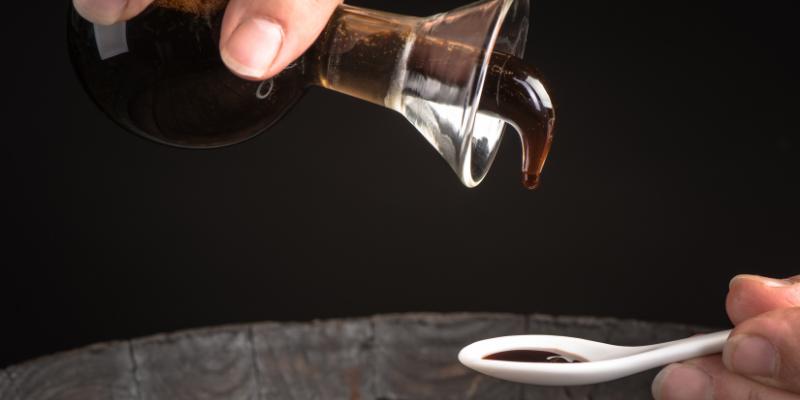
Using vinegar is a great way to naturally remove pesticide residues. You can make your own fruit and vegetable wash with a one to three mixture of water and distilled white vinegar.
Some suggest that a solution of 4-parts water to 1-part vinegar for soaking works well too. Both methods are effective in removing pesticides, but the vinegar may leave a residue which can affect the taste of your produce.
If you choose to use this method, be sure to rinse your fruits and vegetables thoroughly after soaking or spraying.
Using Saltwater
Using saltwater is a great way to help remove pesticides and bacteria from fruits and vegetables.
Simply dissolve one teaspoon of salt for every cup of warm water and soak your produce in the solution for an hour before draining the water into a wash basin.
Studies have found that a 10% saltwater solution is the most effective, far more so than plain water alone. After soaking, rinse your produce with clean water to help reduce the toxic properties of any remaining pesticides.
Saltwater can be a powerful tool for keeping your produce free from unwanted chemicals and bacteria.
Using Baking Soda
I’ve already discussed the various ways of rinsing, rubbing and scrubbing fruits and vegetables to remove dirt and pesticides. Another great option is to use baking soda for washing fruits.
A mixture of 1-ounce baking soda to 100 ounces of water is a great way to wash off pesticides.
Soak produce for 12-15 minutes for the baking soda to do its job and swish it around in the water or push it down several times to ensure it’s submerged.
Ultra-sonic cleaning with a baking soda solution can be more effective at removing surface pesticide residues than tap water alone.
Additionally, submerging apples in a baking soda bath for a couple of minutes removed more pesticides than a two-minute soak in a bleach solution.

How A New Piece Of Technology Provides The Drug Free Pain Relief You’ve Been Looking For
If you’re anything like me, you don’t want to use drugs or pills that you’re unsure about.
Using Citrus-Based Cleaners
Citrus-based cleaners are made from natural ingredients such as lemon juice, orange juice, and grapefruit juice. These cleaners can be used to make a solution that can be used to soak the produce in for 15-20 minutes.
This will help to remove any wax coatings, dirt, and pesticide residue that may remain on the surface of the organic produce.
Citrus-based cleaners are safe to use as they are not harsh on the produce. Plus, they smell great too!
So if you want to make sure that your fruits and vegetables are as clean as possible, give citrus-based cleaners a try!
Using Hydrogen Peroxide
To make a hydrogen peroxide solution, mix one cup of hydrogen peroxide with two liters of water. Let the produce soak in this solution for 10/15 minutes, then rinse thoroughly with fresh tap water.
Not only will this help to kill any germs, but it can also help to remove chemicals from the surface.
If you don’t have hydrogen peroxide on hand, you can also make a solution of one teaspoon of bleach to two liters of water and let the produce soak in this solution for 10 minutes.
Then rinse with water to get the best results.
Using Essential Oils
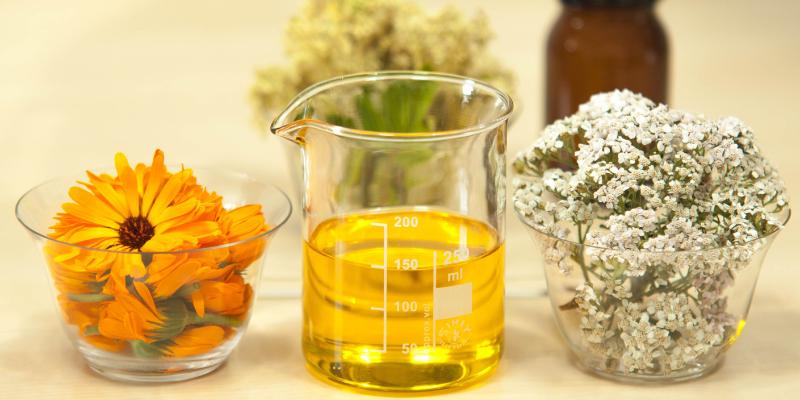
Want to remove pesticides from fruits and veggies in a natural way? Use essential oils!
Not only do they have powerful antioxidant and antimicrobial properties, but they’re also a safe and effective option for cleaning your produce.
Oils like lemon, grapefruit, and orange have antibacterial and antifungal properties that can help to remove dirt, waxes, and pesticides.
To use essential oils for washing your fruits and vegetables, simply fill your kitchen sink with cold water and add 5 drops of the mentioned essential oils. Allow your produce to soak for a few minutes before rinsing them with cold running water.
This method is incredibly simple and cost-effective, making it an excellent choice for those looking to avoid harsh synthetic chemicals while still ensuring their produce is clean.
Using Activated Charcoal
Activated charcoal is another great way to get rid of pesticides and other unwanted contaminants from fruits and vegetables.
Activated charcoal works by trapping unwanted molecules in its micro-pores, making them easier to remove.
To use activated charcoal, mix it with water and stir until the powder is dissolved. Then, soak your produce in the solution for 10 minutes.
Afterwards, rinse the produce with cold running water and you’re done!
This method is particularly effective at removing more stubborn contaminants that are harder to remove through rinsing, rubbing and scrubbing.

How A New Piece Of Technology Provides The Drug Free Pain Relief You’ve Been Looking For
If you’re anything like me, you don’t want to use drugs or pills that you’re unsure about.
Wrap Up: How to Wash Fruits and Vegetables to Remove Pesticides
In today’s world, where food safety is a growing concern, it is crucial to take extra steps to minimize exposure to harmful chemicals like pesticides.
Now you know how to wash fruits and vegetables to remove pesticides is an easy and effective way to protect yourself and your family from the potential risks associated with pesticide exposure.
By incorporating this simple step into your daily routine, you can enjoy the many health benefits of fresh produce without worrying about the potential harmful effects of pesticides.
Remember, every small step towards a healthier lifestyle counts, and washing your fresh fruit and vegetables is one step you can take today.
FAQ – Frequently Asked Questions
Does washing vegetables remove pesticides?
Yes, washing vegetables can remove some pesticides from the surface of the produce, but it may not remove all of the residue, especially those that have penetrated the skin or been absorbed into the flesh.
Wich are the common pesticides used on fruits and vegetables?
There are many different types of pesticides used on fruits and vegetables, including herbicides, insecticides, and fungicides, and the specific types and amounts used can vary depending on the crop and location.
Why Are Pesticides Used on Produce?
Farmers use pesticides on products to protect the crops from pests and diseases, and to increase yield and quality by reducing damage caused by insects, fungi, and other threats. They can also be used to prolong shelf life and improve the appearance of produce, making it more appealing to consumers.

